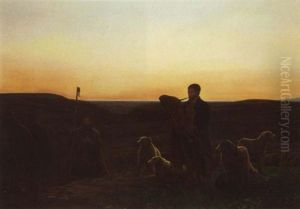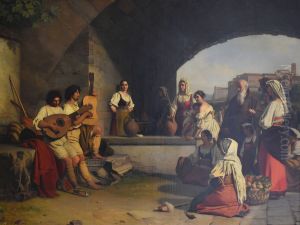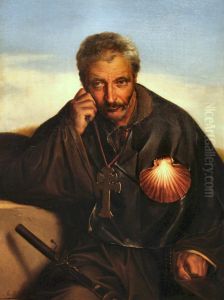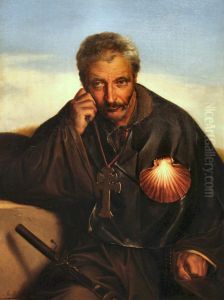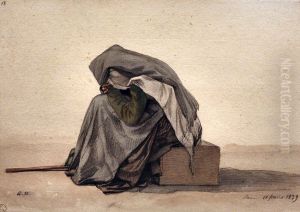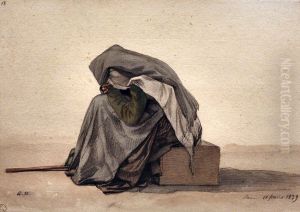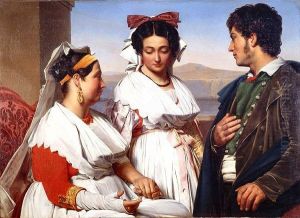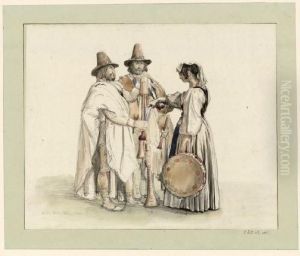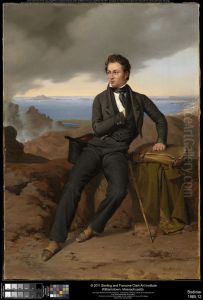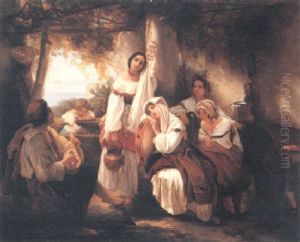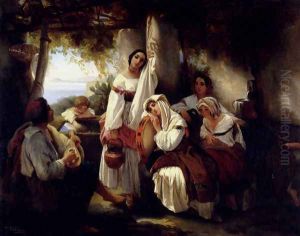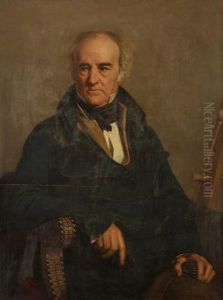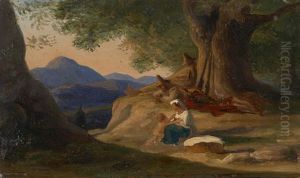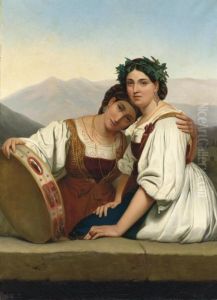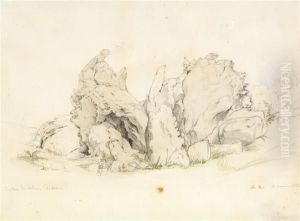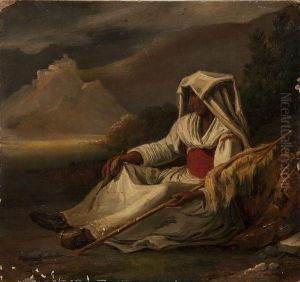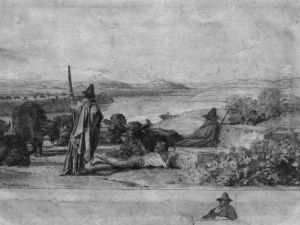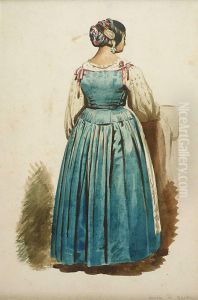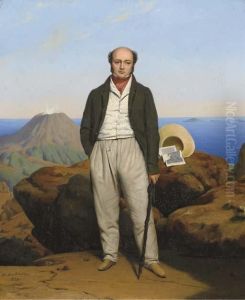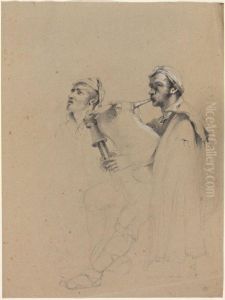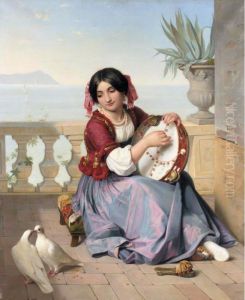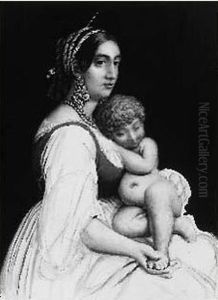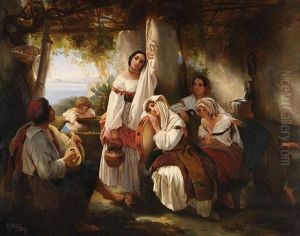Guillaume Bodinier Paintings
Guillaume Bodinier was an influential French painter born in Angers, France, in 1795. He is well-remembered for his contributions to the Orientalist movement, a genre that depicted the Middle East, North Africa, and Asia Minor, capturing their cultural, social, and architectural nuances through a European lens. Bodinier's art was shaped by his travels and prolonged stays in Italy, where he developed a keen interest in the landscapes and people, which later influenced his orientalist subjects.
He embarked on his artistic journey at a young age, showing an early aptitude for drawing and painting. In pursuit of formal education, Bodinier moved to Paris, where he became a student of the renowned Neoclassical painter Jean-Auguste-Dominique Ingres. Ingres's influence is evident in Bodinier's meticulous attention to detail and the classical composition of his works. However, Bodinier's style evolved as he began to incorporate the vibrant colors and intricate details characteristic of the Orientalist movement.
In the 1820s, Bodinier made his first trip to Italy, which marked a pivotal moment in his career. He was captivated by the Italian landscape and its people, themes that would recur in his later works. His experiences in Italy enriched his palette and broadened his thematic scope, allowing him to transition from classical and religious subjects to more ethnographic ones. This shift was well-received, and Bodinier gained recognition for his unique blend of Neoclassical technique with Orientalist themes.
Throughout his career, Bodinier exhibited his works at various salons and gained the patronage of notable figures, which helped solidify his reputation as a leading Orientalist painter. His paintings are distinguished by their detailed depiction of everyday life, landscapes, and architectural wonders of the East, rendered with a sense of realism and empathy that was ahead of his time.
Despite his success, Bodinier remained dedicated to his art, continually seeking to capture the essence of his subjects with authenticity and respect. He passed away in 1872, leaving behind a legacy that continues to be celebrated for its contribution to the Orientalist movement and its nuanced portrayal of Eastern cultures. Guillaume Bodinier's works remain a testament to his skill as a painter and his vision as an artist, bridging cultures through the universal language of art.

